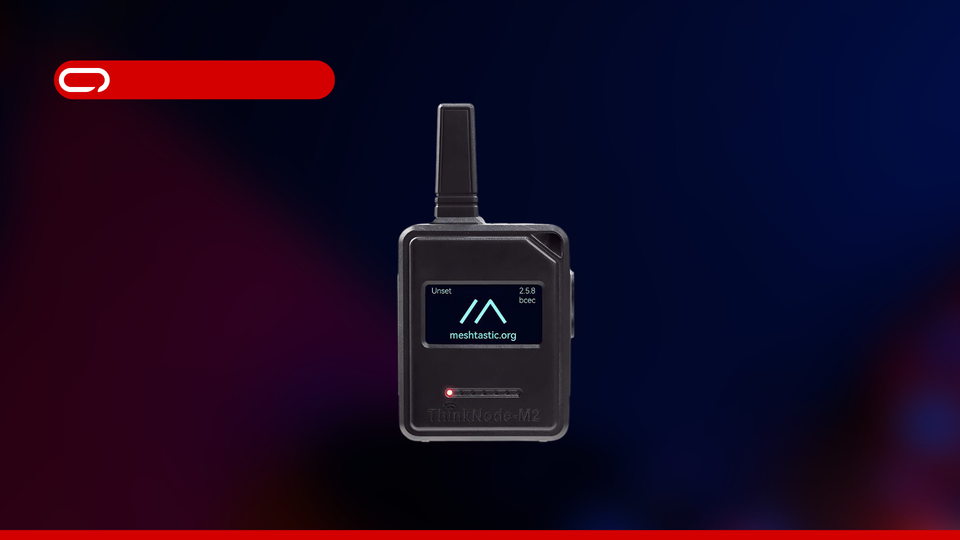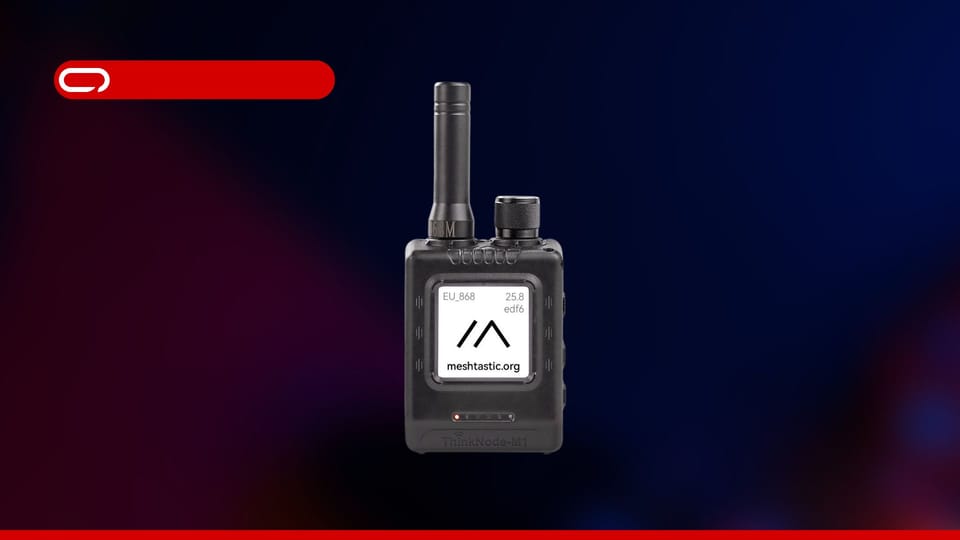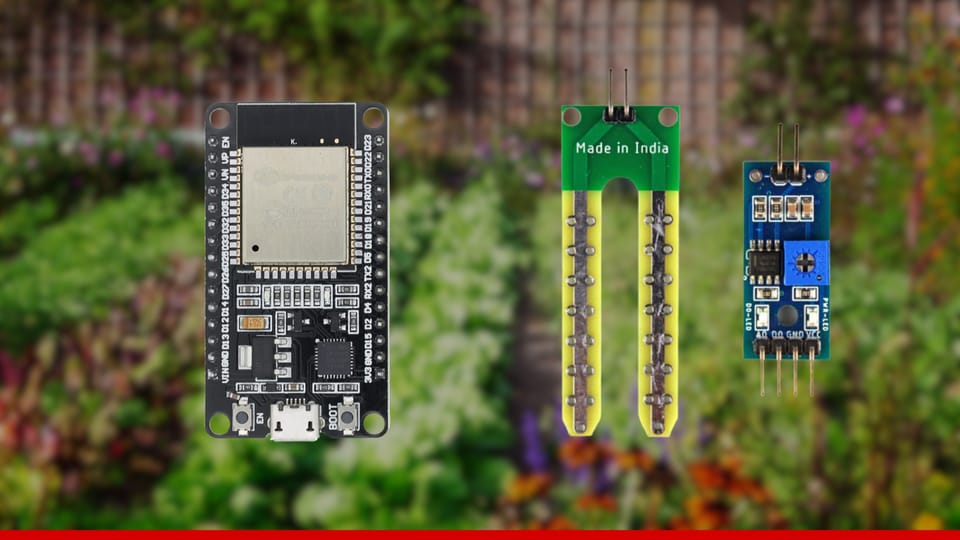Meshnology N35 N33 N32 Review: The $32 Heltec V3 DIY Kit That Actually Makes Sense?
Meshnology's N33, N35, and N32 kits turn the Heltec V3 into ready-to-assemble Meshtastic handhelds. At $23.99 with code ADR25, the N33 is a steal, but the N35/N32's confusing $41.99 pricing raises questions.
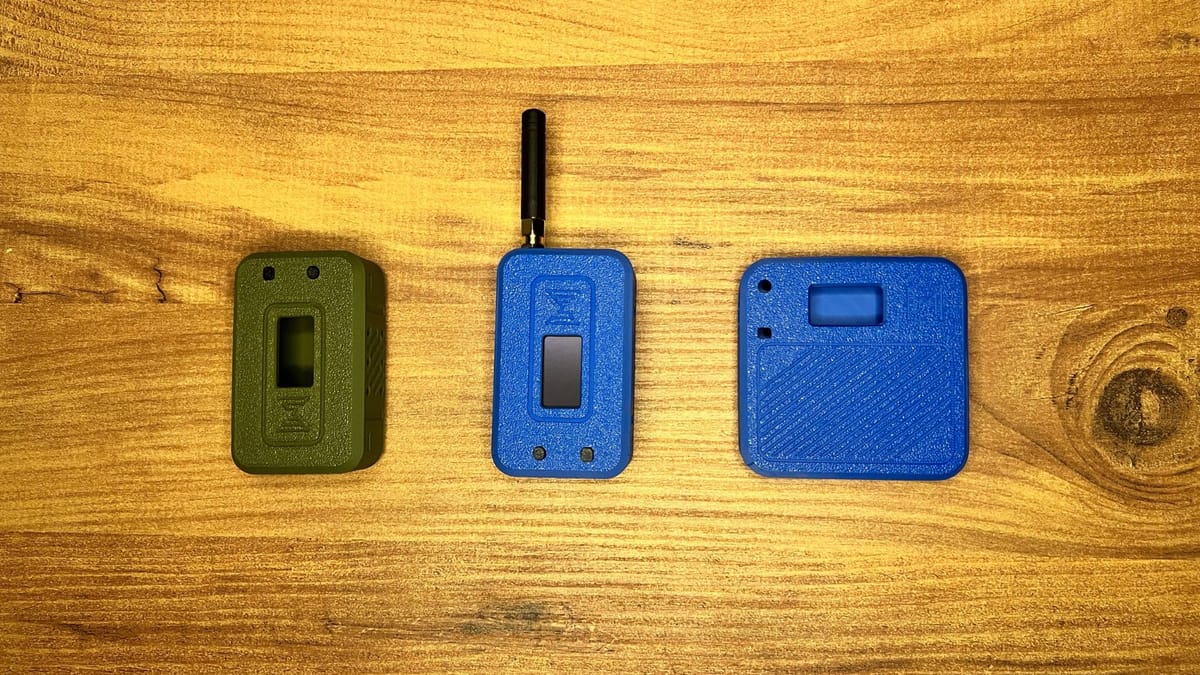
Meshnology's N33, N35, and N32 kits bundle the popular Heltec V3 board with a 3000mAh battery and 3D-printed case, turning a bare development board into a ready-to-assemble Meshtastic handheld. At $31.99 for the N33 (or $23.99 with discount code ADR25), it's a solid deal for DIY enthusiasts who want everything in one package. But at $41.99 for the N35 and N32 ($31.49 with ADR25)? That's where things get confusing and questionable, especially with frequent price fluctuations between their website and Amazon. Add in the fact that Amazon prices are even higher (sometimes $5-10 more), and Meshnology's pricing strategy starts to feel really not very clear. Let's break down whether these kits are worth your money.
Meshnology N33 Kit: $31.99 → $23.99 (with ADR25, direct only) | $38 (On Discount) - $49 Amazon
Meshnology N32 Kit: $31.99 → $23.99 (with ADR25, direct only) | $38 (On Discount) - $49 Amazon
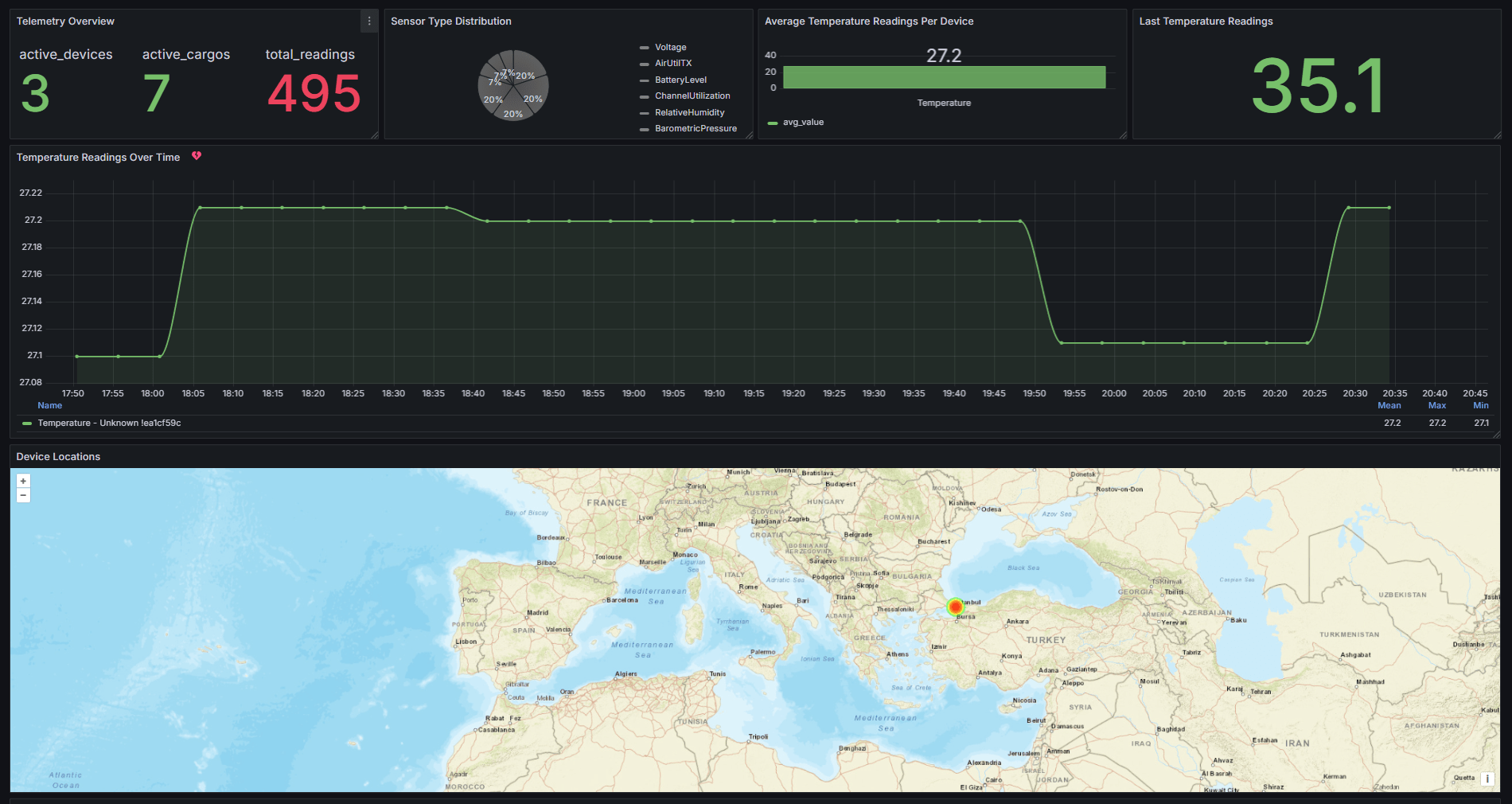
What Are These Kits?
The Meshnology N33, N35, and N32 aren't custom-designed Meshtastic devices they're DIY bundles built around the well-known Heltec V3 board. You get a stock Heltec V3 board as it comes from the factory, a 3000mAh battery pack, a 3D-printed case, screws and hardware for assembly, and an antenna.
The Confusing Naming & Pricing Problem
Here's where Meshnology drops the ball: they have three models with very confusing pricing and unclear differentiation.
The N33 costs $31.99 on their website and comes with a 3D-printed case in a flat, EDC-friendly design. The N35 costs $41.99 and features a 3D-printed case with a pager-style box design. The N32 also costs $41.99, has a design similar to the N33, but includes an injection-molded case option. When you buy just the case separately, the price difference is around $1-3. Yet Meshnology charges $10 more for the N35 and N32 kits compared to the N33.
When we asked why, they said it's due to "design shell making cost" and that the N35 and N32 designs are "more functional." But if the case alone only costs $1-3 more, why does the full kit cost $10 more? This feels like a markup without clear added value.
Our take? The N33 at $31.99 is transparently priced: roughly $20 for the Heltec V3 plus around $10 for case and battery. That's fair. But charging $10 extra for the N35 and N32 when the only real difference is a slightly different case design? That's not transparent at all, especially when customers have to dig through the product line to figure out what they're actually paying for. More transparency would be appreciated, Meshnology.
What's in the Box?
Opening the kits N33, N35, or N32 you'll find a Heltec V3 board in its factory packaging, a 3000mAh battery pack, a 3D-printed case with the design varying by model, screws and mounting hardware including clever metal threaded inserts, and an antenna. No USB-C cable is included, which is worth noting upfront.
Case Design Differences
The main difference between the N33, N35, and N32 is the case design.
The N33 features a flat, EDC-friendly design that slips easily into a bag or pocket, making it more practical for everyday carry. The N35 uses a pager-style box design that's bulkier but has a different aesthetic some might prefer. The N32 has a design similar to the N33 but comes with an injection-molded case option instead of purely 3D-printed construction.
All three use similar assembly methods and functionally are identical. The only real differences are aesthetics and whether you get 3D-printed or injection-molded construction.
Assembly & First Impressions
The Good: Flawless Fit (Now)
Let's be honest: Meshnology's first version of these cases was not very well made. Nothing fit correctly, and assembly was frustrating. But to their credit, they were extremely responsive and helpful when we reported the issues. They sent us the updated version of the N35, and wow, it fits flawlessly. Everything clicks into place cleanly, and the tolerances are spot-on. We didn't test the updated N33 or N32, but we're confident they're equally well-made.
Very few brands we deal with are this quick and helpful when issues arise, and that's worth calling out. Meshnology really stepped up here, and the updated cases show they're listening to feedback and improving their products.
Assembly Process: Easy but Could Use Better Instructions
The assembly itself is pretty straightforward. Meshnology provides a guide on their website showing how to put everything together for all three models N33, N35, and N32 and it's clear enough if you have some DIY experience.
However, there's one glaring issue: the guide doesn't mention what to do with the soft foam pads that come in the kit. From experience, we know these should go on the battery to prevent it from moving around and wiggling inside the case. This should be clearly stated in the instructions.
Also, while the online guide works, it would be much nicer if they included a printed instruction sheet in the box especially for a DIY kit aimed at beginners. Having a physical reference during assembly would make the whole process smoother and more user-friendly.
Clever Design: Metal Threaded Inserts
One standout feature across all three models: instead of screwing directly into the 3D-printed plastic (which would wear out quickly, especially in 3D-printed cases), Meshnology includes metal square inserts with threading. You slide these into little holes in the case, and the screws secure into them. It's a clever, cost-effective solution that's way cheaper than using metal threaded caps while still being durable and long-lasting.
This is exactly the kind of thoughtful design we wish more 3D-printed cases used. It's a small detail, but it makes a real difference in durability and repairability.
Features Overview
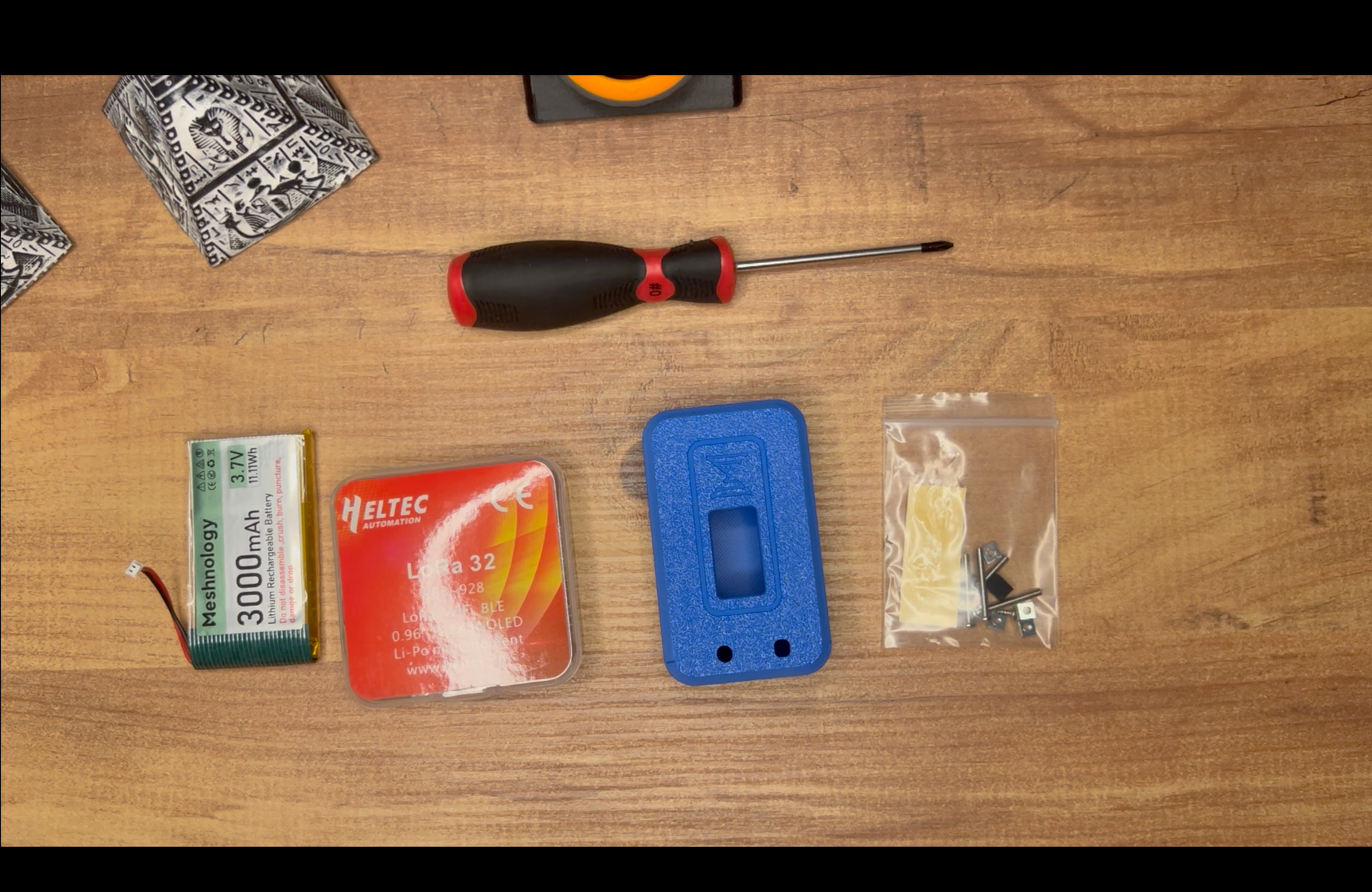
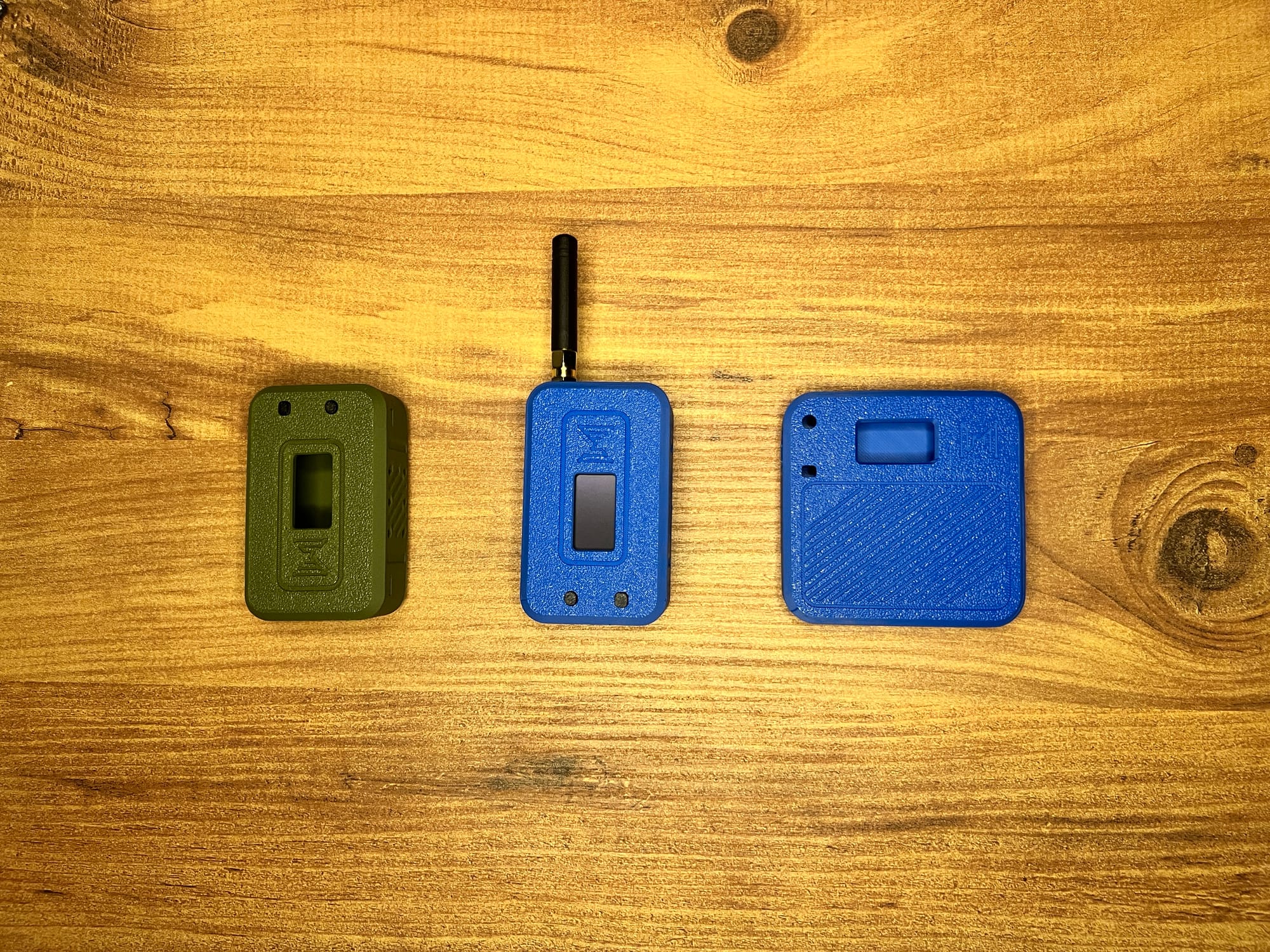
Since the N33, N35, and N32 are all Heltec V3-based kits, the core specs are standard across all three models.
The Heltec V3 board uses an ESP32 dual-core processor running up to 240MHz, paired with the SX1262 LoRa radio that supports 863-928MHz frequencies. The board includes a 0.96-inch OLED display with 128×64 resolution, along with Wi-Fi on 2.4GHz and Bluetooth connectivity. The interface consists of USB-C and two buttons for user input and reset functions.
What the kit adds to the bare board is significant. You get a 3000mAh lithium battery, which is a major upgrade over running the bare board without power. The 3D-printed enclosure uses those clever metal threaded inserts we mentioned, and all the necessary screws and mounting hardware are included in the package.
What's missing is also worth noting. There's no USB-C cable included, which is annoying at the $41.99 price point for the N35 and N32, though more acceptable at $31.99 for the N33. There's also no power switch, meaning you have to disconnect the battery or use software to power down the device. And since the Heltec V3 doesn't have a buzzer, you won't get audible notifications either.
Performance
Battery Life: 1.5–2 Days
With the 3000mAh battery included in all three kits N33, N35, and N32 the device lasted around 1.5 days in our testing, though you could probably stretch it to 2 days maybe 3 with minimal screen use and not connecting to bluetooth all the time.
This is about what you'd expect from an ESP32-based device. It's not bad, but it's nowhere near the multi-day performance of nRF52-based handhelds like the Wio Tracker L1 Pro or the Thinknode M1, which gets 2-5 days, or RAK devices that can hit 3-plus days with 3200mAh. The ESP32 is just power-hungry by nature, and there's no getting around that.
For a DIY kit at the N33's $31.99 price, though? Totally acceptable. At $41.99 for the N35 and N32? That battery life starts to look less impressive compared to the competition.
Range & Connectivity
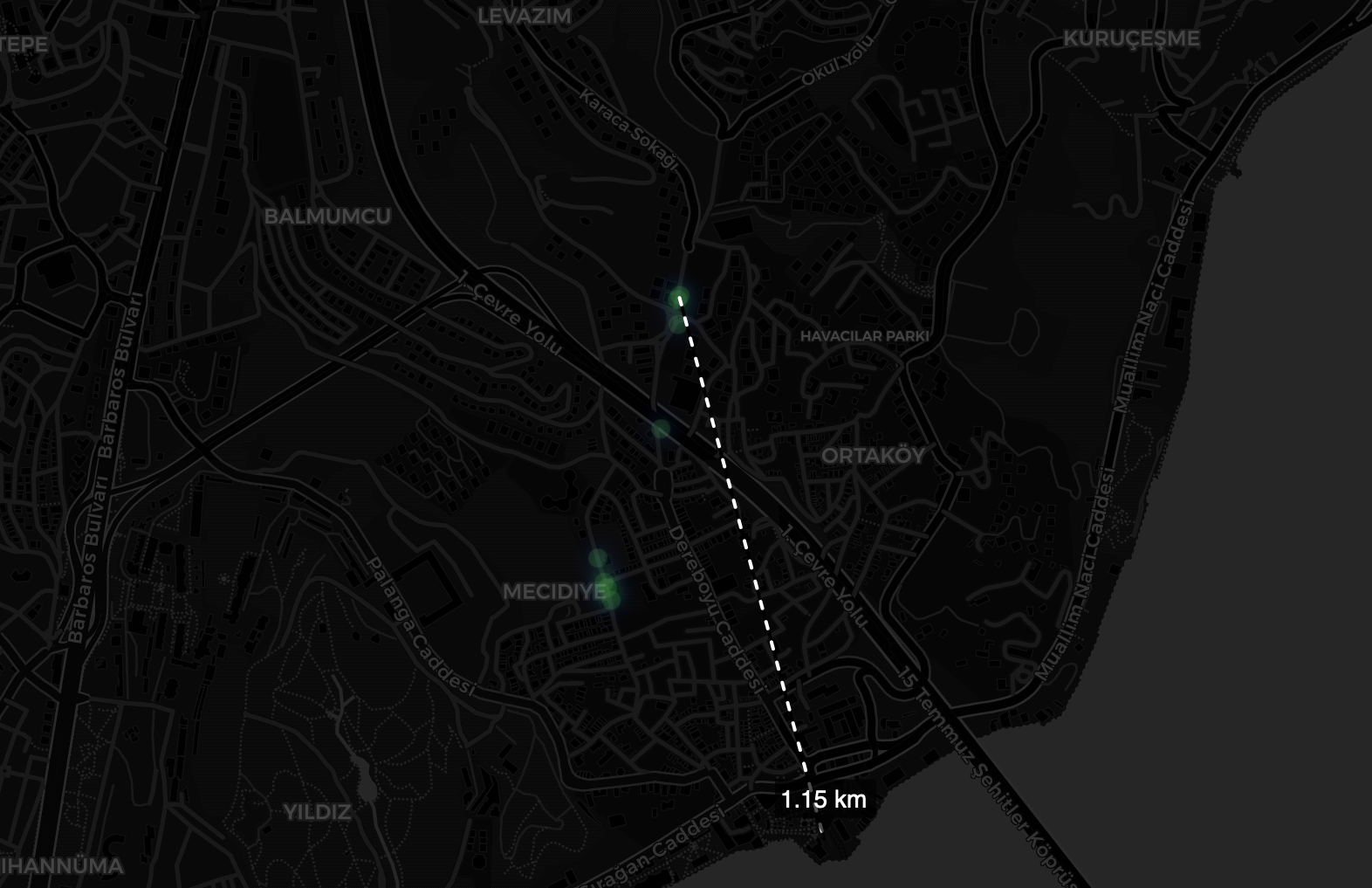
In our range testing, the N33, N35, and N32 all performed similarly since they use the same Heltec V3 board and antenna. We managed around 1.15 KM in urban environments with the stock antenna.
This is significantly less than what we've seen from devices like the T1000-E at roughly 1.8km, the ThinkNode M2 at around 1.71km, or the Wio Tracker L1 Pro also hitting about 1.8km.
The good news? The Heltec V3 has an external antenna connector, so you can easily upgrade to a higher-gain antenna if you need better range. This gives all three kits, N33, N35, and N32, a real advantage over devices with integrated antennas that can't be upgraded.
Screen & Usability
The 0.96-inch OLED screen on the Heltec V3 is pretty small compared to the 1.3-inch screens that have become common on newer ready-to-go handhelds like the Wio Tracker L1 Pro, ThinkNode M2 & M1, and WisMesh devices. That said, it's still usable and readable, just not as comfortable as larger displays.
Text is clear enough for checking messages and navigating menus. It's not the best experience we've had, but it's far from the worst. For a budget DIY kit, it gets the job done, and honestly, at the N33's $31.99 price point, we can't complain too much.
Button Access & LEDs
Both of the Heltec V3's buttons the user button and reset are accessible through the case and easy to press on all three models. The N33, N35, and N32 all handle button placement well, and we had no issues with responsiveness or accessibility during testing.
However, there's no power switch on any of the kits, which is a notable omission. To fully power down the device, you either need to disconnect the battery (unrealistic to open the device) or use navigate through the UI to shut it down. For the N33 at $31.99, this is understandable it's a budget kit. But for the N35 and N32 at $41.99? That's disappointing. Many devices in this price range include a physical power switch, and the lack of one here stands out.
There's also no space to add anything extra like sensors or modules once the case is assembled. This is worth mentioning because while the Heltec V3 is a dev board with expansion potential, once you build it into any of these kits, that flexibility is largely gone.
The Heltec V3's LED indicators are visible through the case on all three models, but there's no dedicated cutout for them. Indoors, it's easy to see the status lights and figure out what's happening with the device. Outdoors in bright sunlight, not so much. It works, but it's not ideal.
Charging & Ports
Charging is done via the Heltec V3's USB-C port, which is easily accessible through the case on all three models N33, N35, and N32. No issues there, and the port placement is practical and convenient.
But here's the thing: no USB-C cable is included in any of the kits. At $31.99 for the N33, we can let this slide, it's a budget kit, and most people have USB-C cables lying around. But at $41.99 for the N35 and N32? Come on. For that price, throw in a cable. It's a small thing, but it adds up when you're already paying a premium.
Form Factor
There's nothing groundbreaking about the form factor here. All three kits N33, N35, and N32 are about what you'd expect from a Heltec V3 board paired with a 3000mAh battery: functional but not particularly compact or sexy.
The N33's flat design is more EDC-friendly and practical for slipping into a bag or pocket. The N35's pager-style box is bulkier and less convenient to carry, though some might prefer the retro aesthetic. The N32 is similar to the N33 in design but with injection-molded option and some changes.
Compared to devices like the ThinkNode M2, which is Tamagotchi-sized and genuinely pocketable, or the T1000-E, which is ultra-compact and water-resistant, these kits are noticeably larger and bulkier. But that's the trade-off for using a dev board and a chunky 3000mAh battery.
Pricing & Value: Where Things Get Messy
This is where Meshnology's product line gets confusing—and frustrating.
The N33 at $31.99: A Solid Deal
Let's break it down. A Heltec V3 board costs around $20. A 3000mAh battery runs about $5-7. A 3D-printed case with hardware adds another $5-7. If you sourced everything separately, you'd be looking at around $30-34 total.
At $31.99 on Meshnology's website, the N33 is transparently priced and offers real value. You're getting a complete DIY kit without the hassle of shopping around for parts, comparing batteries, or designing your own case. For someone who wants to turn a Heltec V3 dev board into a ready-to-go handheld, this is a killer deal.
The N35 and N32 at $41.99: Hard to Justify
Now, the N35 and N32 both cost $10 more than the N33. What do you get for that extra $10?
Answer for the N35: A slightly different case design—pager-style instead of flat.
Answer for the N32: A case design very similar to the N33 but with injection-molded option instead of purely 3D-printed.
That's it. Same Heltec V3 board, same 3000mAh battery, same antenna. Just a different case.
When we asked Meshnology about the price difference, they said it's due to "design shell making cost" and that the N35 and N32 designs are "more functional." But here's the problem: when you buy just the case separately, the price difference is only about $1-3 between models.
So why does the full kit cost $10 more? It feels like a markup without a clear added value. This pricing inconsistency across platforms makes an already confusing situation even worse.
Our Take on Pricing
The N33 at $31.99 (or $23.99 with code ADR25) is a great value and we'd recommend it without hesitation. At under $24 with the discount, it's honestly a steal. Even at full price, it's well priced, offers real convenience, and delivers what it promises.
The N35 and N32 are more complicated. At $41.99 full price, they're overpriced you're paying $10 extra for a different case design when the case alone only costs $1-3 more. However, with the 25% discount code (ADR25), they drop to $31.49, which makes them much more reasonable if you specifically prefer their case designs. That said, the fact that we need a discount code to make them competitive highlights the core problem: Meshnology's pricing strategy is confusing and inconsistent.
And across all models, Amazon prices are typically higher (sometimes $5-10 more depending on sales and color options). If you're buying, use the direct website with code ADR25 for the best deal, unless Amazon is running a competitive Black Friday/holiday sale.
Comparisons: How Do These Kits Stack Up?
When comparing the N33, N35, and N32 against other Meshtastic devices, we focused on ready-to-go handhelds in the same price range that share similar characteristics devices with screens, batteries, and cases that are fully assembled or easy to assemble. The bare Heltec V3 at around $21 is the obvious baseline since it's literally what these kits are built on, helping us evaluate whether the bundled package justifies the extra cost. At the N35 and N32's $41.99 price point, we're looking at the Wio Tracker L1 Pro at $42.90, the ThinkNode M2 at $43.90, and the WisMesh Board ONE Pocket without GPS at $46.97 all direct competitors for users who want a screen-equipped handheld ready to use.
Starting with the bare Heltec V3, you're paying an extra $10 for the N33 or $20 for the N35 and N32 over the $21 board alone. For the N33, that premium makes sense you get a 3000mAh battery, a well-designed case with clever metal threaded inserts, all the hardware, and the convenience of not hunting for parts. The Heltec V3 is a proven dev board with tons of community support, and we've written extensively about how to add sensors, GPS modules, and other peripherals to it. But once you assemble any of these kits into their cases, that expandability becomes mostly theoretical, there's just no space to work with. For the N35 and N32 at $41.99, you're paying $20 over the bare board just for a case and battery, which is hard to justify when better ready-to-go handhelds exist at similar prices.
The Wio Tracker L1 Pro at $42.90 is priced almost identically to the N35 and N32, but it's a completely different league. The Wio uses the nRF52840 MCU, which is far more power-efficient than the ESP32, delivering around 2.5 days of battery life with just a 2000mAh battery compared to the 1.5 days you'd get from the N35 and N32 with 3000mAh. The Wio includes integrated GPS, a joystick for navigation, a buzzer for notifications, solar input support, and full BaseUI support for a modern, intuitive interface. The form factor is smaller and more polished, it comes fully assembled right out of the box, the 1.3-inch screen is larger than the Heltec V3's 0.96-inch display. The N35 and N32 offer flexibility since they're based on a dev board where you can theoretically add sensors and tinker, but once assembled into the case, that flexibility is mostly gone and there's no real advantage. Unless you specifically want a Heltec V3 dev board for tinkering projects, the Wio is simply a much better value at the same price.
The ThinkNode M2 at $43.90 is the most direct comparison since both use ESP32 architecture, both come with screens and batteries, both are ready-to-use handhelds, and neither includes GPS. The M2 uses the ESP32-S3 with a 1000mAh battery and manages around one day of battery life, similar to what you'd expect from the N35 and N32 with their 3000mAh battery. But the M2 pulls ahead with an injection-molded case that feels premium rather than 3D-printed, includes a buzzer for notifications and power button which the N35 and N32 lack, features a Tamagotchi-sized form factor that's genuinely pocketable while the N35 and N32 are bulkier, and has a 1.3-inch OLED screen compared to the Heltec V3's smaller 0.96-inch display. Both have theoretical expandability through GPIO pins, but once assembled in their compact cases, there's no realistic space to add anything.
The WisMesh Board ONE Pocket without GPS at $46.97 costs slightly more but represents a significant step up. It uses nRF52 architecture instead of ESP32, meaning dramatically better power efficiency, while the GPS version lasts around one day, the non-GPS version will likely stretch to multiple days, far exceeding any ESP32 device. The WisMesh features a 1.3-inch OLED screen, professional build quality, and most importantly, genuine modular expansion through its WisBlock sensor slot. Unlike the N35 and N32 where expandability is impractical once assembled, the WisMesh is designed for easy disassembly and the WisBlock system uses a simple plug-and-screw design that makes adding sensors actually practical.
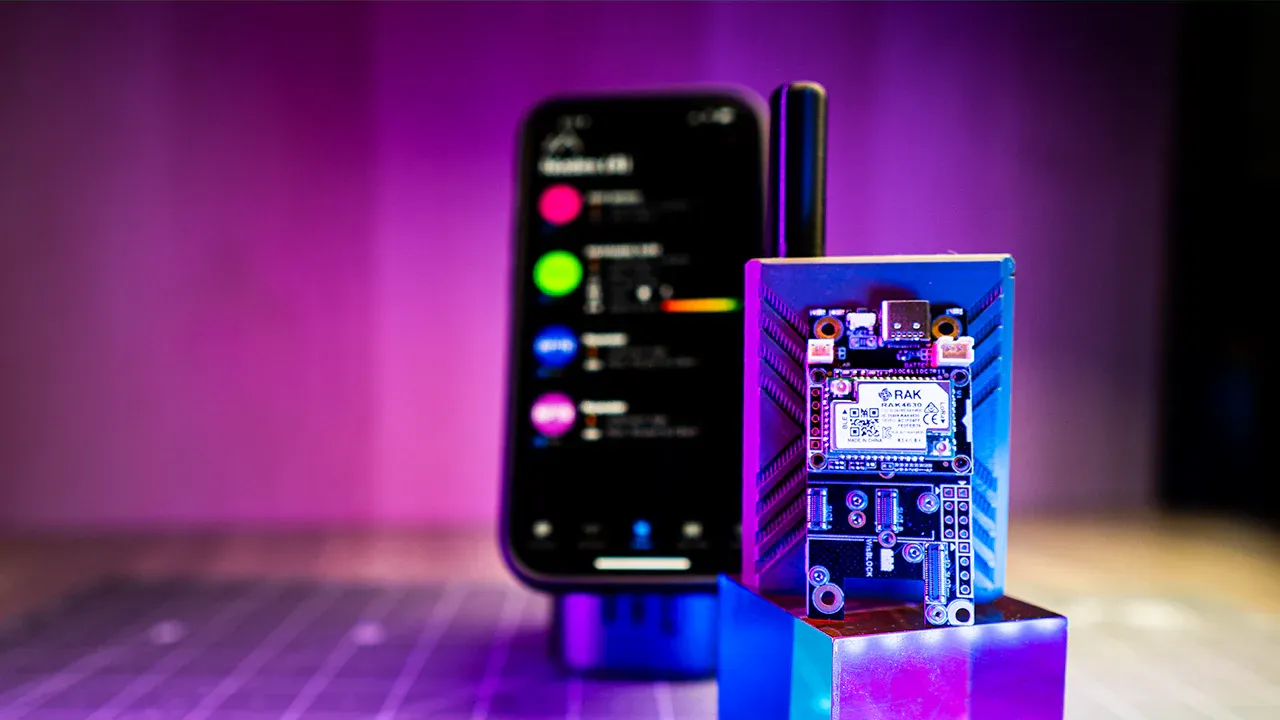
Final Thoughts: Who Should Buy These Kits?
Buy the N33 at $31.99 or below (especially at $23.99 with ADR25) if:
- You want a Heltec V3-based handheld without the hassle of sourcing parts separately
- You're looking for a budget-friendly DIY kit that's ready to assemble with everything included
- You enjoy tinkering with dev boards and want the flexibility to potentially add sensors or customize down the line
- You value convenience and are okay paying around $10 extra for a bundled package that saves you the headache of shopping around
This is a solid deal, especially with the discount code.
The N35 and N32 at $41.99 are hard to recommend. At full price, you're paying $10 extra for nothing more than a slightly different case design. With the 25% discount code (ADR25) bringing them to $31.49, they become more competitive but only if you specifically want their case designs. At this price range, you're still competing with devices like the Wio Tracker L1 Pro at $42.90, the ThinkNode M2 at $43.90, and the WisMesh Board ONE Pocket at $46.97, all of which offer better features, longer battery life, and more polished build quality. The core issue remains: Meshnology's pricing feels confusing and inconsistent, making it hard for customers to know what they're actually getting for their money.
What do you think? Would you buy the N33 for $32, or skip these kits entirely? Let us know in the comments!



